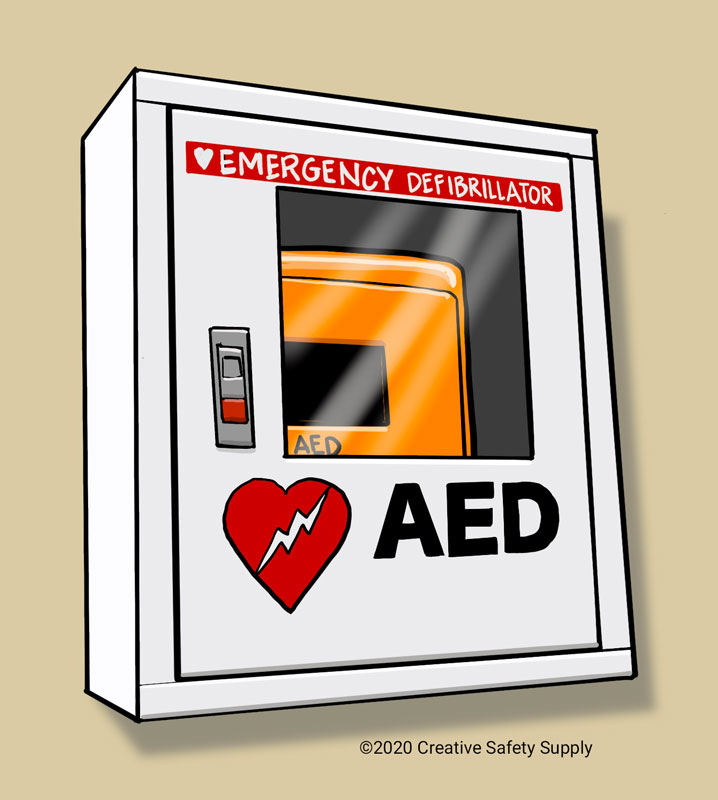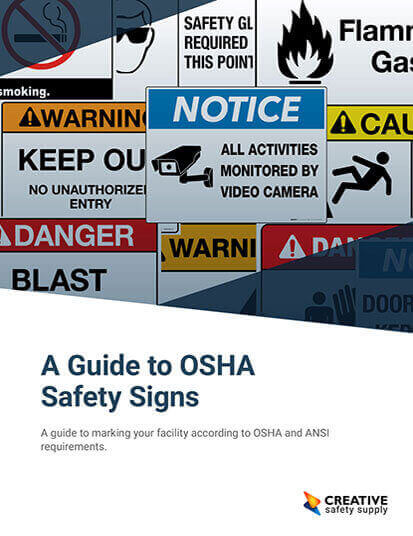
AED stands for Automated External Defibrillator, which is a portable electronic device that analyzes the heart's rhythm and delivers an electrical shock to help restore a normal heartbeat in cases of sudden cardiac arrest.
AEDs are designed to be user-friendly, with clear, step-by-step instructions for anyone to use, even those without extensive medical training. They play a critical role in increasing survival rates during sudden cardiac arrest.
How does an AED work?

An Automated External Defibrillator (AED) works by analyzing a person's heart rhythm during cardiac arrest and delivering an electrical shock if necessary to restore a normal heartbeat. When using an AED, first ensure the area is safe, then turn on the device and follow the voice and visual prompts it provides. Attach the electrode pads to the bare chest, as indicated on the device, and allow the AED to analyze the heart rhythm. If a shock is advised, the AED will instruct you to clear the area and press the shock button (or will deliver the shock automatically, depending on the model). After the shock, continue CPR as instructed by the AED until emergency services arrive.
Sudden cardiac arrest (SCA) can occur anywhere, making automated external defibrillators (AEDs) essential for emergency response. Their portability and ease of use make them vital in public spaces and workplaces, where SCA can occur unexpectedly.
FAQs
Q: What is an AED and when is it used?
A: An AED, or automated external defibrillator, is a small device that can deliver an electric shock to the heart of a person who is experiencing sudden cardiac arrest. Sudden cardiac arrest is a life-threatening condition that occurs when the heart stops beating normally and cannot pump blood to the body. According to the American Red Cross, sudden cardiac arrest in adults is among the leading causes of death in the United States. An AED can recognize two types of abnormal heart rhythms that cause sudden cardiac arrest: ventricular fibrillation and ventricular tachycardia. An AED can restore the normal rhythm of the heart by delivering a shock, also known as defibrillation. An AED should be used as soon as possible after sudden cardiac arrest occurs, along with CPR (cardiopulmonary resuscitation) if the person is not breathing or moving.
Q: How does an AED work?
A: An AED is easy to use and has voice and visual prompts that guide the user through the steps. The basic steps for using an AED are as follows:
- Make sure the person is in a safe place, away from water or metal surfaces. Remove any clothing or jewelry from their chest. If they have a pacemaker or medication patch, do not place the AED pads over them.
- Turn on the AED and follow the instructions. Attach the pads to the person’s chest: one pad on the right side above the nipple, and one pad on the lower left side below the armpit. Press the pads firmly to make good contact with the skin.
- Let the AED analyze the person’s heart rhythm. Do not touch the person while the AED is analyzing. If the AED advises a shock, make sure no one is touching the person and shout “Clear!” before pushing the shock button.
- If a shock is not advised, or after delivering a shock, check if the person is breathing or moving. If not, start CPR and follow the AED prompts. Do not turn off the AED until emergency help arrives.
Q: Why are AEDs important for businesses and facilities?
A: AEDs are important for businesses and facilities because they can save lives in case of sudden cardiac arrest. The chances of survival for a person who suffers sudden cardiac arrest decrease by 10 percent for every minute that passes without defibrillation. The average response time for first responders to arrive is 7-14 minutes, with 1 out of 10 instances taking 30 minutes or more. Therefore, having an AED on site can make a significant difference in saving someone’s life. AEDs are also easy to use and do not require special training or certification to operate. However, businesses and facilities should follow some best practices for maintaining and using their AEDs, such as checking them regularly, storing them in accessible locations, and informing their staff and customers about their availability.
Q: How can I learn to use an AED and perform CPR?
A: The American Red Cross offers AED/CPR training courses for anyone interested in becoming certified in these lifesaving skills. These courses are designed to teach people how to respond to emergencies where a person may be experiencing cardiac arrest or other life-threatening conditions. The courses cover topics such as how to recognize an emergency, how to perform CPR on adults, children, and infants, how to use an AED, how to assist a choking victim, and how to prevent disease transmission. The courses are available online or in person at various locations across the country. Upon completing the course, students will receive a certificate that demonstrates their proficiency in performing CPR and using an AED.
Similar Questions
- How do I use an AED?
- What is an AED?
- Why are AEDs Necessary in the Workplace?
- What does CBRN stand for?
- What does CCP stand for?
- Will exposure to hazards in the workplace cause injury illness or other adverse health effects?
- What is a cleanroom?
- What’s inside a first aid kit?
- What are examples of a hazard?


